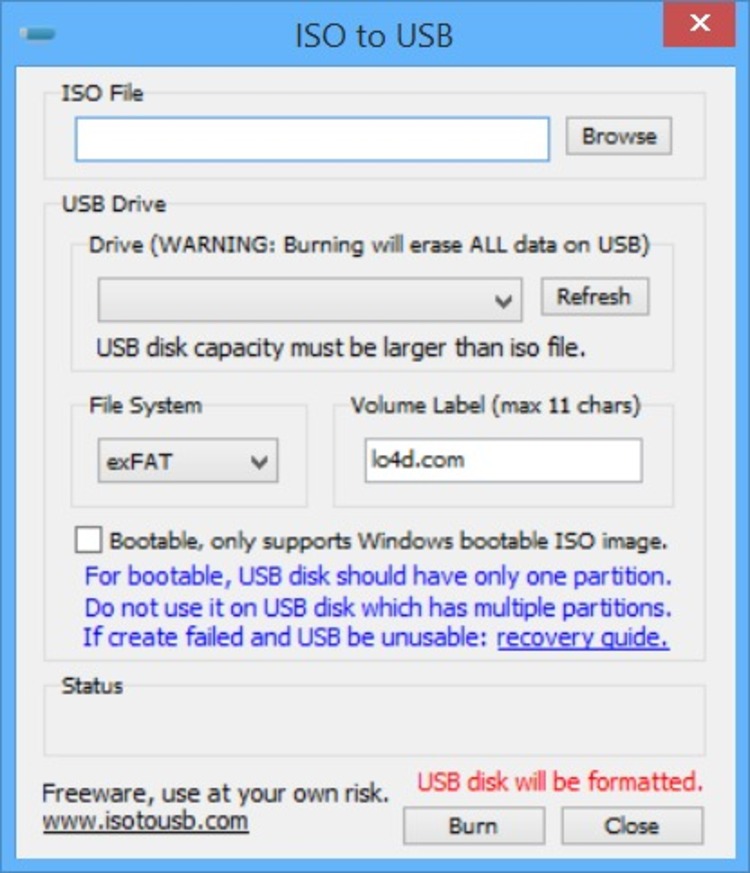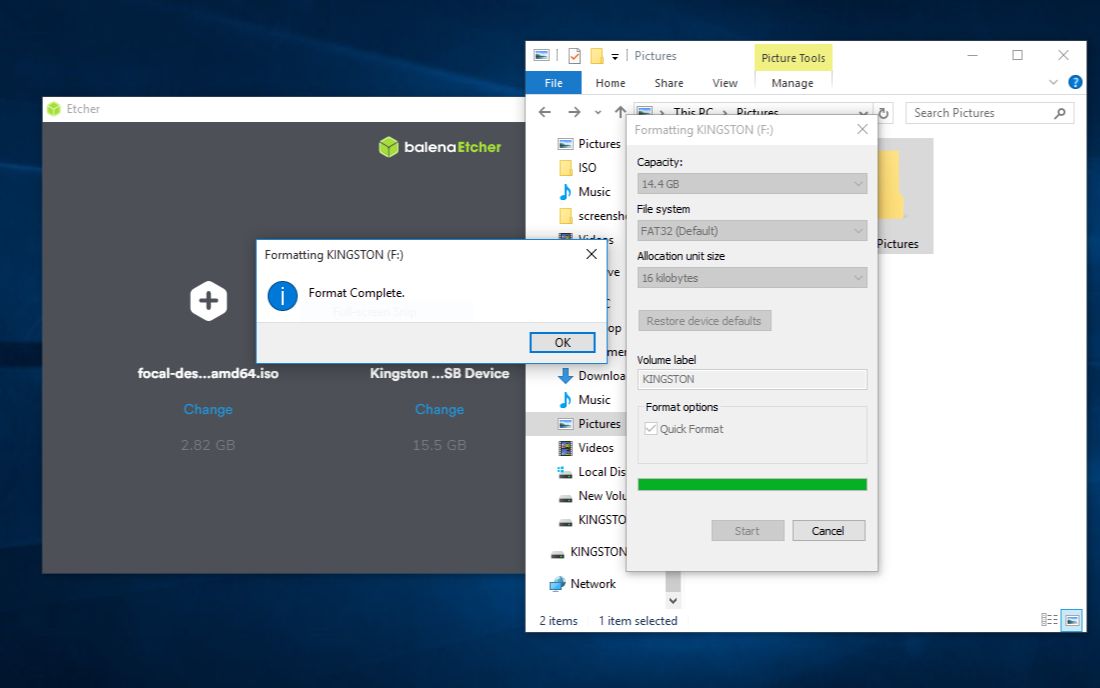

- Windows 10 burn iso to usb bootable linux how to#
- Windows 10 burn iso to usb bootable linux install#
- Windows 10 burn iso to usb bootable linux upgrade#
- Windows 10 burn iso to usb bootable linux full#
- Windows 10 burn iso to usb bootable linux windows 10#

Windows 10 burn iso to usb bootable linux install#
Performing a clean install or a reset means you have to reinstall apps and desktop programs and start over with settings and preferences.
Windows 10 burn iso to usb bootable linux windows 10#
Windows 10 tip: Repair your Windows 10 installation
Windows 10 burn iso to usb bootable linux upgrade#
Here's everything you need to know before you repair, reinstall, or upgrade Windows 10, including details about activation and product keys. Before you get back to work, use this checklist to ensure that your privacy and security settings are correct and that you've cut annoyances to a bare minimum. You've just upgraded to the most recent version of Windows 10. Take advantage of the opportunity to create a recovery drive so you have a way to perform repairs if something ever goes wrong.Īfter Windows 10 upgrade, do these seven things immediately If your Windows 10 PC is operating perfectly right now, great.

Questions about installing and activating Windows 10? Here's what you need to know before you dive in.
Windows 10 burn iso to usb bootable linux how to#
How to install, reinstall, upgrade and activate Windows 10 Need more details about the right way to do a clean Windows 10 install? See these previous articles: Label the drive (including the version number) and keep it in a safe place. Choose the option to overwrite all existing files.
Windows 10 burn iso to usb bootable linux full#
Position the two File Explorer windows side by side and drag the full contents of the mounted drive to your USB flash drive. Open a second File Explorer window, locate the Windows 10 ISO file you downloaded, and double-click to mount it as a virtual drive. Open File Explorer and double-click the recovery drive you just created to open its contents in a window. For full details, see "Windows 10 tip: Create a recovery drive.") (The easiest way to find this tool is to type Create a recovery drive in the search box on the taskbar, then click the shortcut from the search results. Plug the USB flash drive into your PC and use the Recovery Media Creator tool create Windows 10 recovery drive. This process will delete all data on the USB drive, so back up any important files before proceeding. The current situation with Ubuntu 20.04 LTS has changed since this question was asked, commented and answered.In addition to the ISO file, you also need a USB flash drive at least 8 GB in size. Until this problem with woeusb is solved, you can use mkusb that is decribed at this link: Woeusb is not yet working with this new version of Ubuntu, but there are alternatives. The tool mkusb-tow is doing the job in mkusb version 12.5.6 and newer versions). Mkusb 12.5.6 with new installer for WindowsĪ set of workaround commands for woeusb in Ubuntu 20.04 LTS is described in the following link, Create FAT-partition (or for files > 4GB exFAT) 3. community/Installation/iso2usb/diy/windows-installer-for-big-files You can do it yourself with detailed help at copy-paste all files of the mounted image onto usb device Alternative use woeusb Sorry for long answer instead of the link, but my reputation is still low. (But in most cases it should be possible to turn off secure boot, use the drive created by woeusb, and turn on secure boot again.) This method works in both BIOS and UEFI mode and also with secure boot. It appears that the Windows 10 ISO image is also suitable for USB media without any changes. Figure out what device the flash drive is. Don't guess here, since choosing the wrong device means you'll overwrite your hard drive. If the drive is mounted, run mount to see what the last line is, and pick the device portion of that (e.g., /dev/sdb if the line starts with something like /dev/sdb1). If it's not mounted, run dmesg (with sudo if necessary), scroll to the end, and find the entry for the device that starts with sd ( sdb in the given example). If your device is listed in the mount output, unmount it by running sudo umount /dev/sdb1 (assuming that was what was listed). Here are the commands to accomplish this the old way: From an elevated shell: DiskPart.exe. Windows 8 has the ability to mount an ISO or VHD by simply double-clicking the file. If you are sensitive to cybersecurity, you can use Software to burn ISO to USB drive. Now, a bootable USB is easily created without needing DiskPart.exe or a non-Microsoft tool to mount the ISO file. Run dd if=/home/jaakko/Downloads/Win10_1909_EnglishInternational_圆4.iso of=/dev/sdb bs=1M, replacing /dev/sdb with the device you discovered in step 2 (without the digit on the end). Windows USB/DVD Download Tool is able to install Windows 10, 8 and 7 on PCs. 
Burn linux mint iso to usb windows 10 install# With Windows USB/DVD Download Tool, you just need two steps to create a bootable USB flash drive. That will write the data to disk, and then you can use it as a normal bootable flash drive.īesides easy to use, Windows USB/DVD Download Tool is faster than other burner tools.
Burn linux mint iso to usb windows 10 install#.








 0 kommentar(er)
0 kommentar(er)
